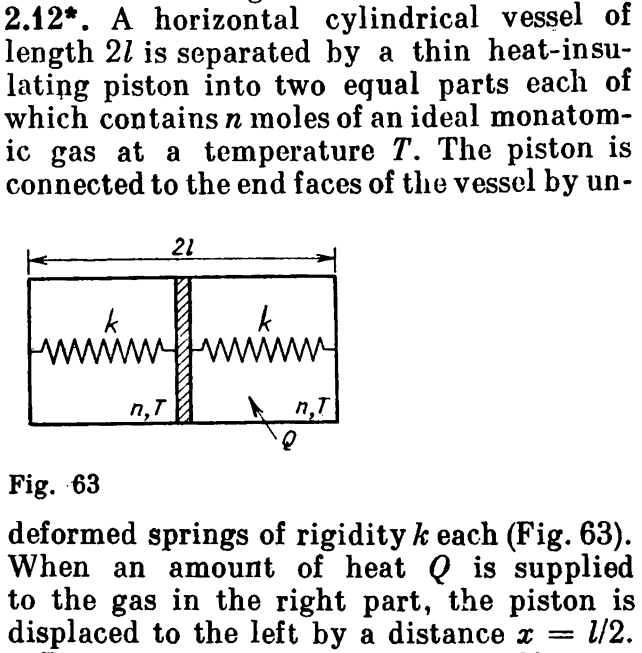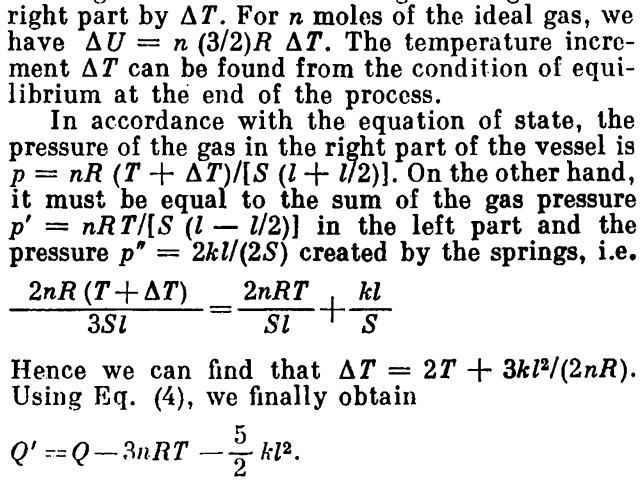When doing problems in thermodynamics, there is often a situation where a gas is thermally insulated inside a container.
To me, this would mean that there is no heat transfer to the gas ($Q=0$), so the gas can do work at the expense of it's internal energy.
I was doing Aptitude Problems in Physics by S.S. Krotov. In a certain problem, we have a gas under a thermally isolating piston, yet somehow the author says that, due to this, the internal energy of the gas doesn't change ($\Delta U=0$).
I am trying to find an error in the reasoning, and I am not quite sure what does thermally insulated mean.
....
I am terribly sorry for not posting earlier, but this is the first chance I got. I figured it would be best to post the problem & solution directly. Maybe I am misinterpreting the solution after all.


Here is the solution. The sentence in red seems to be putting me off.



